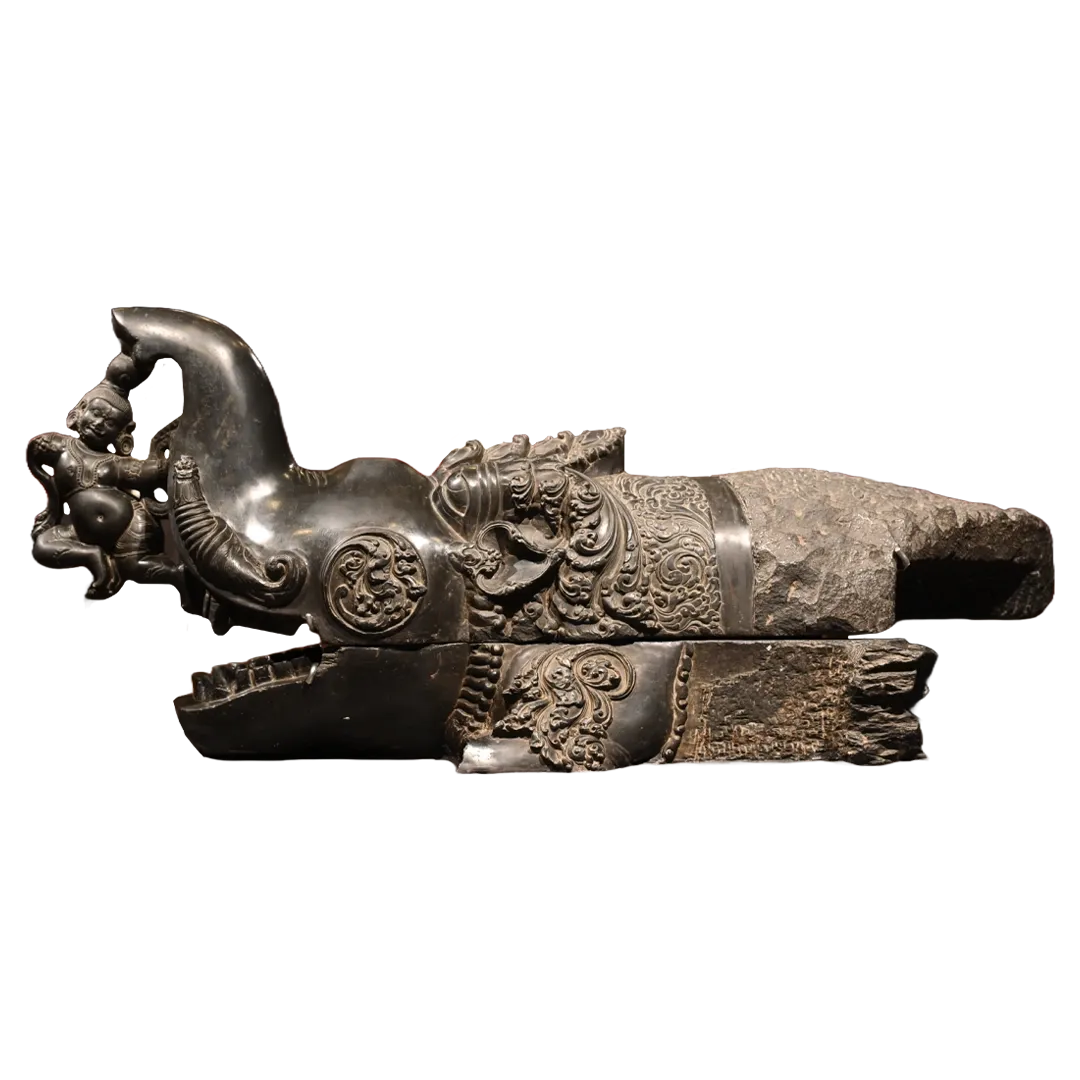


This gargoyle from the late 12 th century CE, is an elaborately carved waterspout,a common architectural element prevalent in ancient Hindu temples of South East Asia. The word ‘gargoyle’ is actually of European origin, they became an integral addition to churches in Europe from the 12 th century CE onwards.The gargoyles were placed on the sides of the buildings to prevent rainwater from running down masonry walls and minimising architectural damage. Seen here is a gargoyle or a carved grotesque from an Indian temple, with a spout on one end, which was used to drain sacred water from the sanctum sanctorum. To explain the iconography in brief – the elongated creature is a makara, a legendary sea animal in Hindu mythology, who is trying to swallow the sacred water, while a yaksha positioned at the front is applying force to keep the makara’s snout open so the water can be drained out instead. The makara has been rendered with folds on the forehead and bulging eyes in order to suggest this tussle between the two creatures.
Another symbolism of these grotesque carvings is that they are considered to ward off evil and are viewed as harbingers of good fortune. In its appearance and symbolism, the concept of a gargoyle is similar to the yali,which is a mythical creature seen mostly on the pillars of South Indian temples.